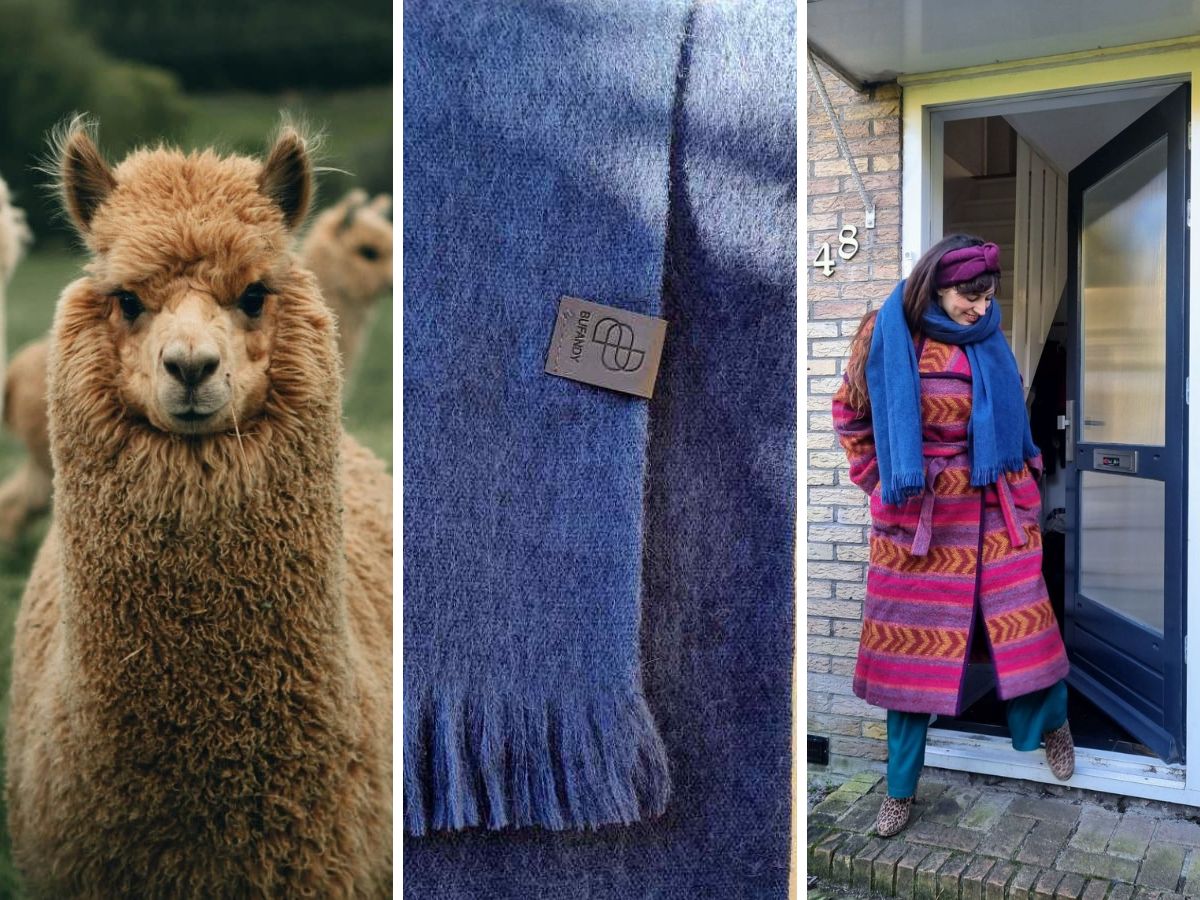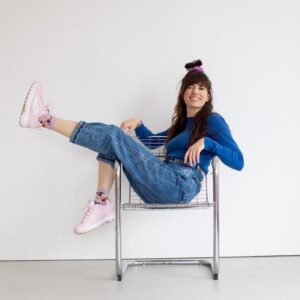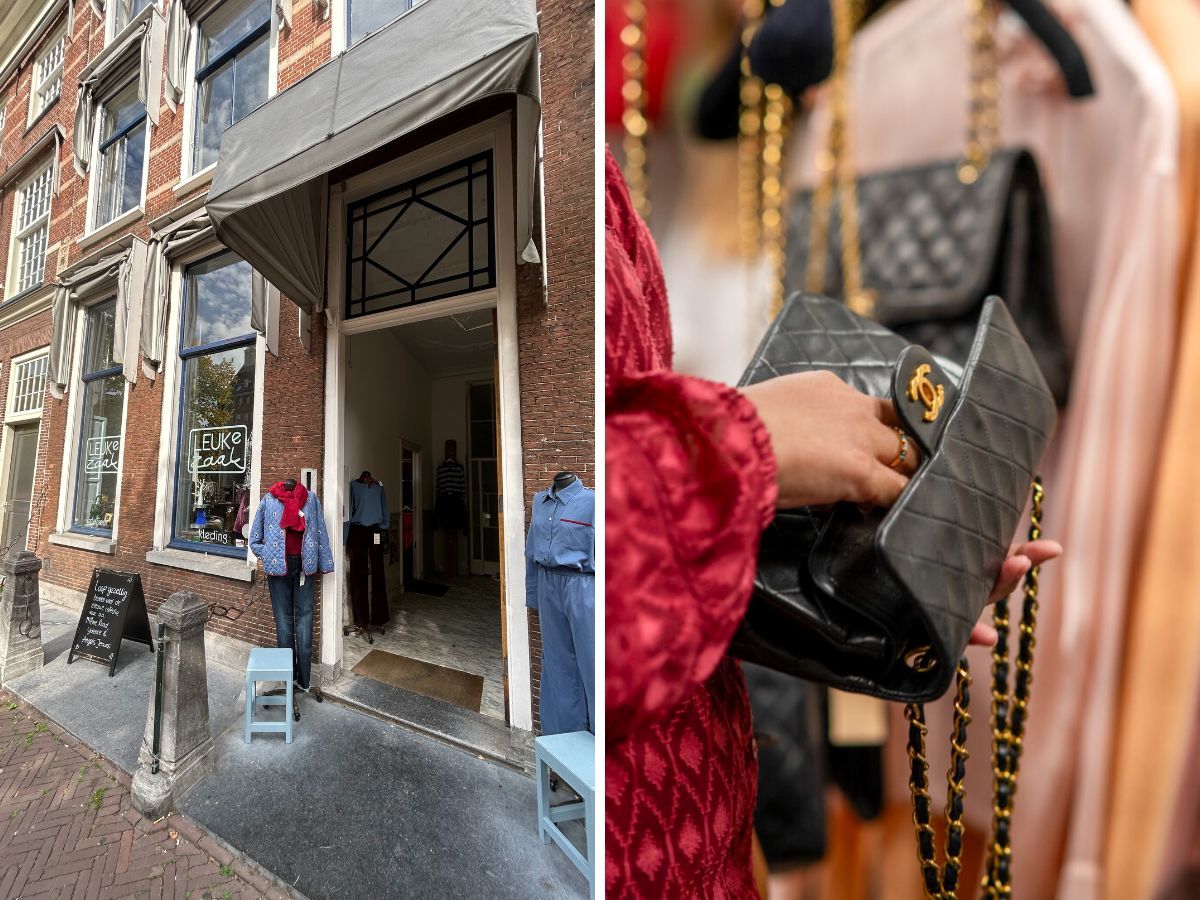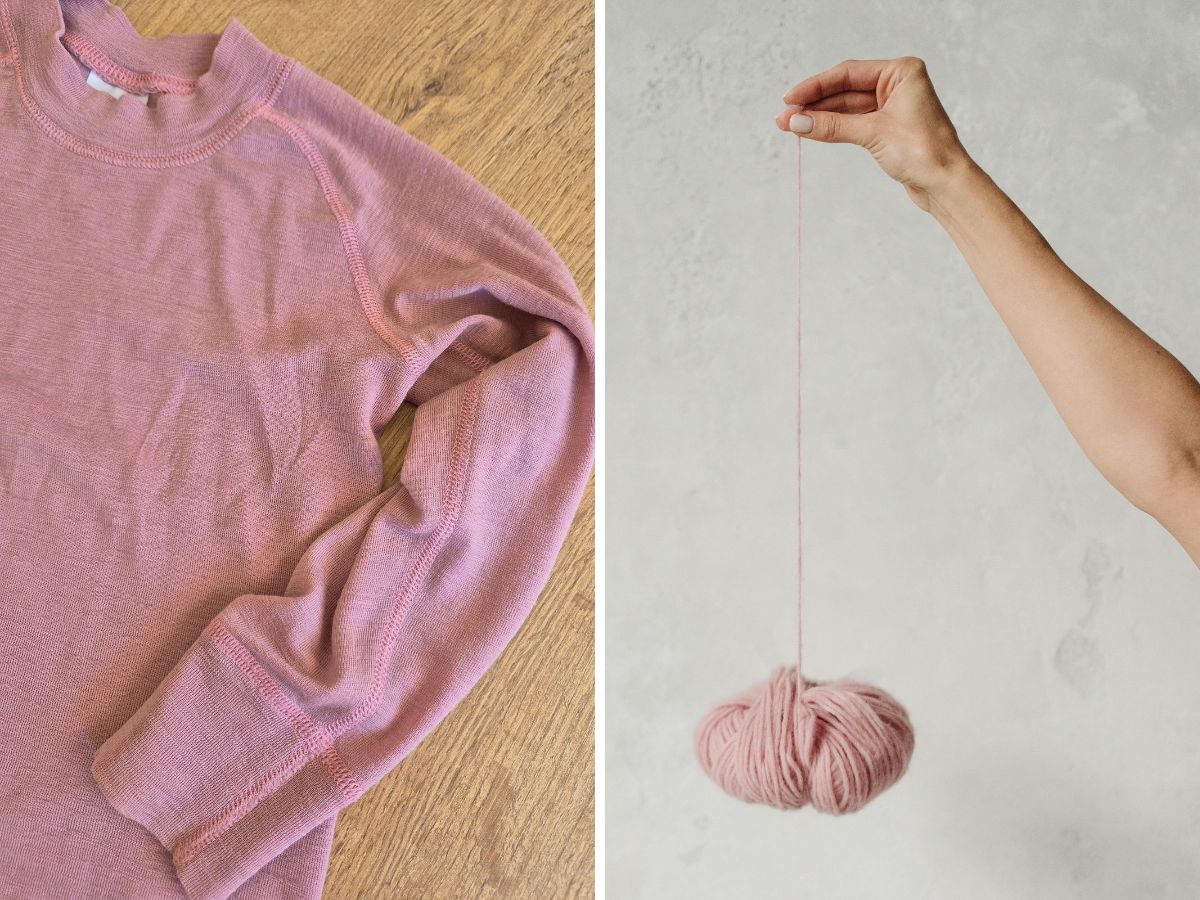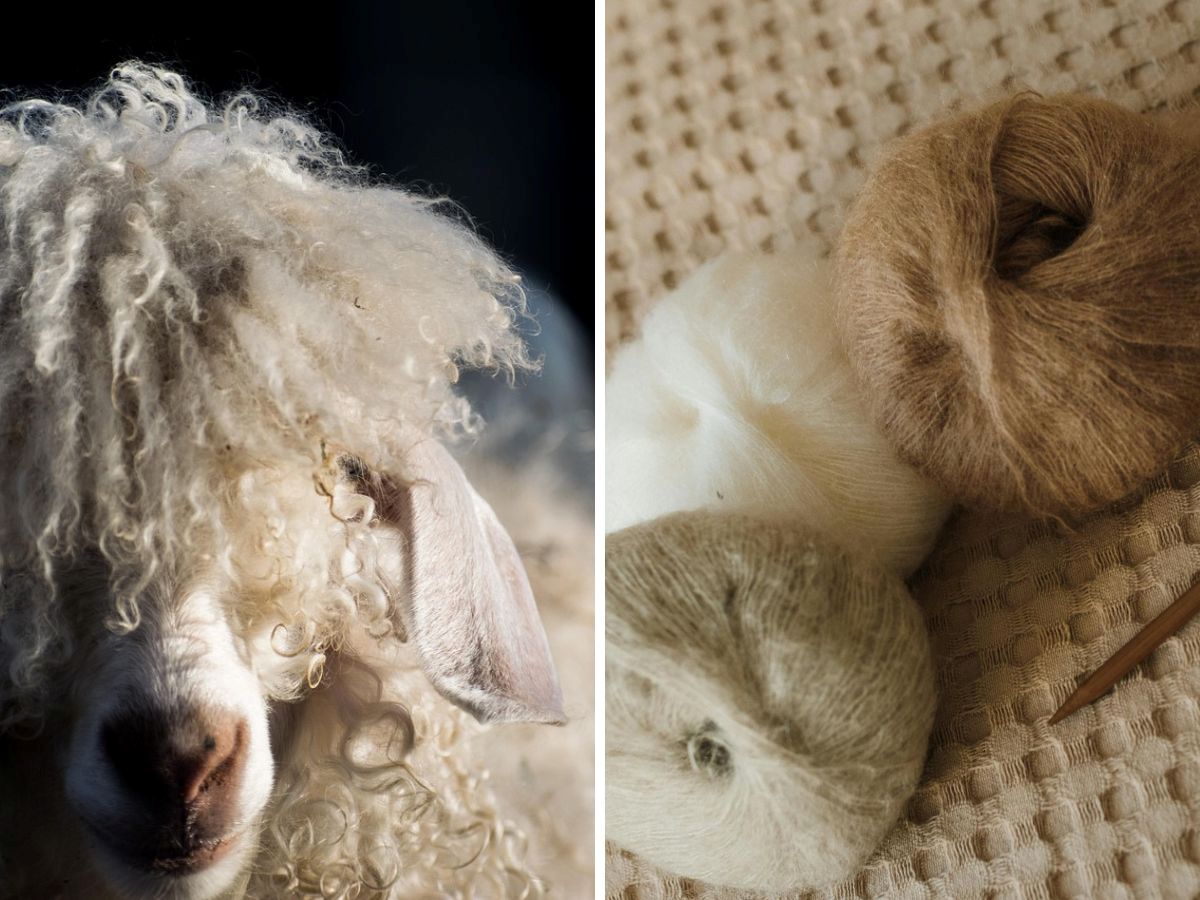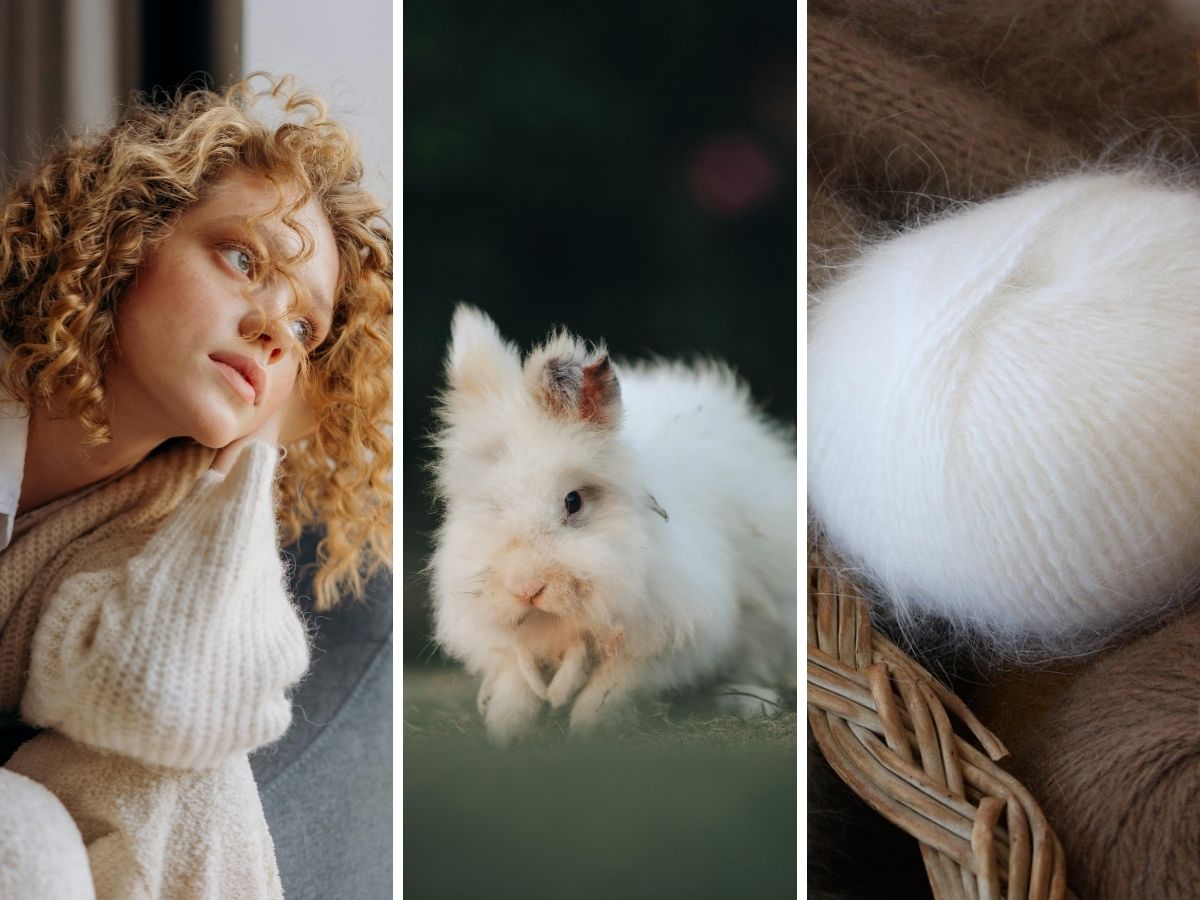For ages, I've been looking for a really good sustainable scarf that doesn't itch and still keeps me warm. One made of natural materials, free of animal suffering and with a low environmental impact. That's quite a wish list. Saskia got a tip: an alpaca wool scarf from fair fashion brand Bufandy.
Sheep wool bad for the climate?
In collaboration with Bufandy
When I think of a warm scarf, I think of wool, nice and warm. But did you know that sheep's wool is definitely not a sustainable material? When you think of a wool, you quickly think: ‘this is a nice natural material, it must be a good choice’. But sheep farming, like cattle farming, is incredibly harmful to the planet and contributes to global warming. Sheep eat a lot. And digesting their food releases gases in their intestines. And these have to get out. And so they burp and fart a lot so sheep, like cows, also produce huge amounts of methane. Methane is a super-powerful greenhouse gas, as much as 28 times stronger than CO2. And that's not all. Sheep farming also harms the environment, so the wool industry uses a lot of chemicals and is not free of animal suffering either.
OK, wool is bad for the environment and is not free of animal suffering. So an ordinary wool is not going to be it for me. But what is?
Other materials not necessarily better
And so I delve into other more sustainable materials that scarves could be made of. I read about scarves made of recycled PET, which is a polyester made from old plastics. The circular idea behind it appeals to me, but it is still a synthetic fabric that is also not free of microplastics. We wrote about this when we took a closer look at the fleece jumper. Vegan wool comes along, but yes that is also synthetic, of course. And so I come back to wools. Besides sheep's wool, you also have clothes and scarves made of goat's wool, merino wool and so also alpaca wool.
Alpaca and merino wool
The latter two, merino and alpaca wool, do appeal to me. These natural materials are nice and warm, super soft and don't itch. About alpacas, I learn that they live and eat a lot more sustainably. They graze in their natural habitat in the high plains of the Andes and naturally require little water and food. Their metabolism works differently from sheep, so they produce far fewer harmful emissions. The paws of alpacas have soft pads that keep the ground untouched. In addition, they bite off the grass instead of pulling it out of the ground root by root. As a result, the land remains undamaged and the grass grows back. That sounds promising! But on the other hand, I read stories about extreme animal suffering in obtaining the wool, especially alpaca wool garments from fast fashion brands are said to have blood on them. Jeez, choosing something as simple as a sustainable scarf turns out not to be that simple.
My conclusion: one wool is not the other
It is becoming increasingly clear to me that - as with many more sustainable choices - it is not all so black and white when choosing a sustainable scarf. After all, you also have organically certified sheep's wool and recycled sheep's wool that is much less bad for the environment. And also those fine soft woollens of alpaca and merino can right are again a more sustainable choice, though. At least, if you know which brands work with farmers who produce in an environmentally, animal and people-friendly way. And so that's how I ended up at Bufandy. They sell beautiful scarves made from alpaca wool (80% wool). The other 20% does have acrylic, but this is added from the sustainable idea of extending the scarf's lifespan. ‘The addition of acrylic makes the scarves less fragile, making them last longer than, say, a scarf made of 100 per cent wool. We think it is important to consider extending the lifespan when producing a garment,’ says Gabi van Ingen of Bufandy.



Sustainable alpaca farm in Peru.
In Peru, Bufandy works with the Michell Group, a certified company that in turn works with several alpaca farmers. Gabi: ‘We visited one of the farms at an altitude of five thousand metres in the Andes to learn more about how the alpacas are kept. We were the first foreign guests they received and lovingly told us what the whole process is like. This introduction was very special and gave us a good insight into what it's like.’
Bufandy: beautiful sustainable scarves made of alpaca wool
Bufandy scarves are fairly made by artisans in Ecuador. Since the beginning in 2013, they have been working with Fabian, who runs a family business. Alpacas have been domesticated for thousands of years, meaning they do not live in the wild. It is necessary to shear alpacas once a year so they do not produce too much wool and die of heat stress in summer. They are sheared in the spring so that the fur has enough time to grow back for the cold winter months. Gabi: ‘We source our alpaca wool from Peru where we work with certified farmers who traditionally keep their herds in the high mountains. The alpacas experience no stress during their clipping and are treated with love and respect. One cutting produces two kilos of wool. This contains different qualities of wool, which are sorted by hand by specialised women. The finest wool is used for our scarves.’


Super happy with this lovely warm scarf.
More facts about alpaca wool from Bufandy
- Alpaca wool is super soft for your skin and contains no lanolin (wool fat) like sheep's wool, for example. This makes the washing process less intensive, which saves a lot of water and energy. The wool also barely pills because of this and the fabric is hypoallergenic so it doesn't sting or itch.
- Alpaca wool is among one of the most luxurious wools, it is a very fine light and soft fabric. It can keep you extremely warm. At the same time, it can also bring you coolness when it is hot because of its hollow fibre. It has insulating properties and is water-repellent.
- When I shared about my scarf on Instagram, there were followers who had a scarf made of alpaca wool that was over a decade old (and still totally beautiful).
About Bufandy
Bufandy is a fair fashion brand from Amsterdam that focuses on making wonderfully large and soft alpaca wool scarves. The scarves are produced in a sustainable and ethically responsible way. Gabi: ‘Every year we develop a new collection, but we also take colours from previous years, so there are few scarves left over that are not sold because they are supposedly no longer ‘in trend’. In addition, this year we have had children's scarves produced from residual wool, so as not to end up with batches of wool that are no longer used. We take it for granted that all the people we work with earn a fair wage and work a normal number of hours a day in a safe environment. We produce our products with love for people, animals and the planet’.’
Want to know more about (and especially see) Bufandy's alpaca wool scarves? View the collection in their webshop. They have scarves in two sizes and over 30 colours.
Want to gift a scarf to someone else and find it hard to choose? Then give a Sustainable Fashion Gift Card as a gift with which you can choose a scarf of your choice. Want to know more about Sustainable Fashion Gift Card? Then check out this review.
More sustainable tips from thegreenlist.nl
- Also see: how bad is eco fleece for the environment?
- Also see: sustainable materials, which clothing fabrics are more environmentally friendly?
- Also see: sustainable washing, all about sustainable washing machines and detergent.
- Also see: Clothing brand Vanilia: an undiscovered sustainable gem
Source: PETA, Scientias, from here.nl. Photo credits: head beed alpaca: Josiah Farrow (Pexels), other: Bufandy & thegreenlist.nl.

